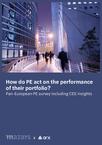
How do Private Equity act on the performance of their portfolio in Western Europe and CEE region?
We have surveyed a panel of pan-European PEs, including active/passive and minority/majority shareholders, and on average ~70% are satisfied with the performance of their investments. Below are the key findings:
- Reasons for dissatisfaction are linked to strategy, management teams, and operations;
- Capital control and involvement in operations make a difference.
Active majority shareholders tend to be satisfied (after 3 years) quicker than passive majority PEs. To meet performance expectations, all PEs have reported their need for more operation analysis before the transaction and more supervision of execution after the deal. Based on their involvement in operations we have identified 3 PE models.
New topics of investigation are coming to the front:
- For 53% of our respondents, ESG is either included in the DD package or is embedded in their DNA, through their internal policy rules;
- 14% have mentioned cybersecurity risks. However, this topic is expected to shift towards the top of priorities as it is already gaining traction in regulatory audit works.
With more topics on their plate and the realisation that being involved in the management of their investment matters, PEs are left with 2 choices to increase performance:
- Developing in-house teams with either such specialists as operating partners, ESG managers or more hands-on participation executives;
- Or the involvement of specialised external advisors.
The CEE region is becoming more and more attractive, with growing potential for PE funds, closely following Western Europe.
- The portfolio company type and the average number of portfolio companies owned by PE funds are slightly lower in CEE compared to Western Europe.
- Growth capital and LBO represent 82% of the investment types in CEE (versus 64% in Western Europe).
- Having a look at the reasons of underperforming portfolio companies, we see that they are more or less the same in CEE and Western Europe, looking at market evolution, operations complexity and competition.
- The human factor seems more sensitive in CEE to improve the performance of an investment, with a higher expressed need to conduct additional or focused HR and operational due diligence.
- Average IRR at exit is generally higher in Western Europe than in CEE.
- More Western European companies consider that the EBITDA at exit is above their expectation after 5-7 years and 7 years.


